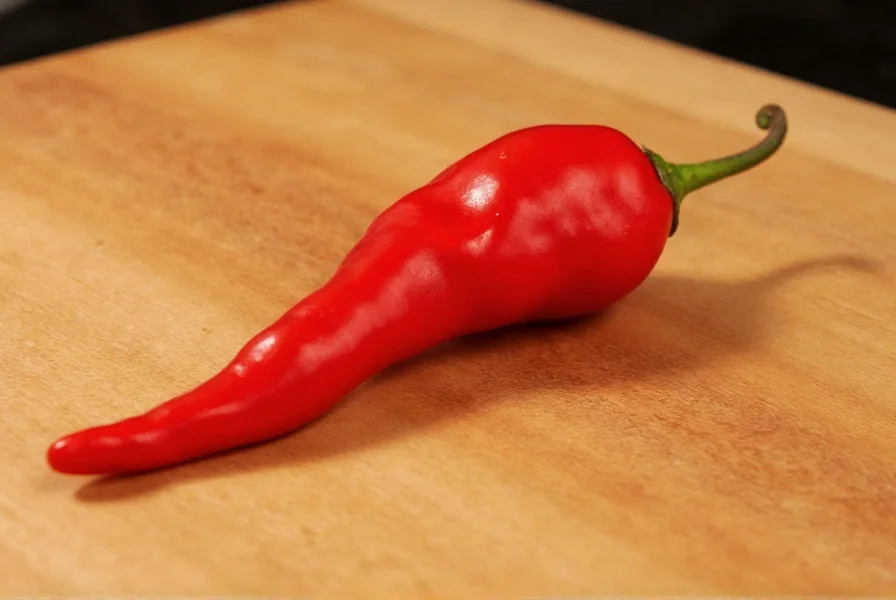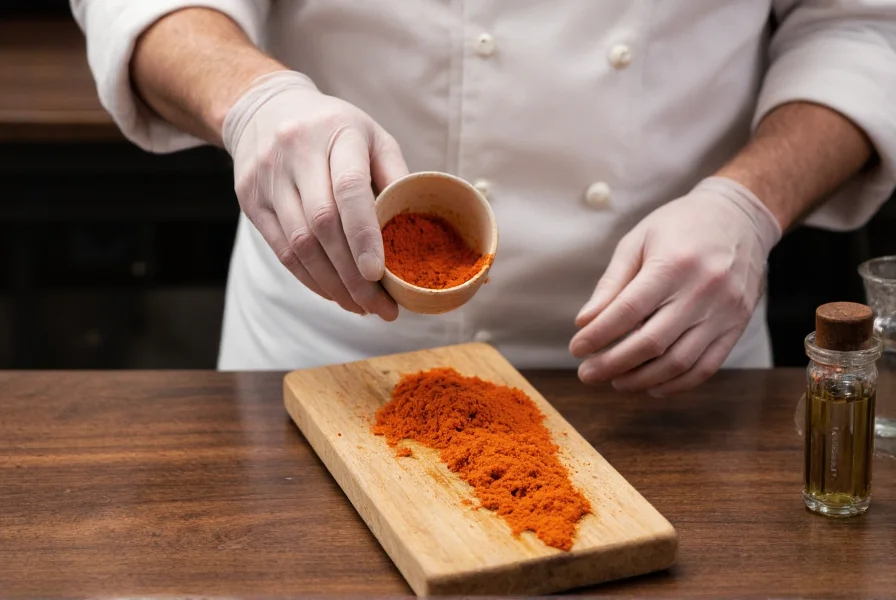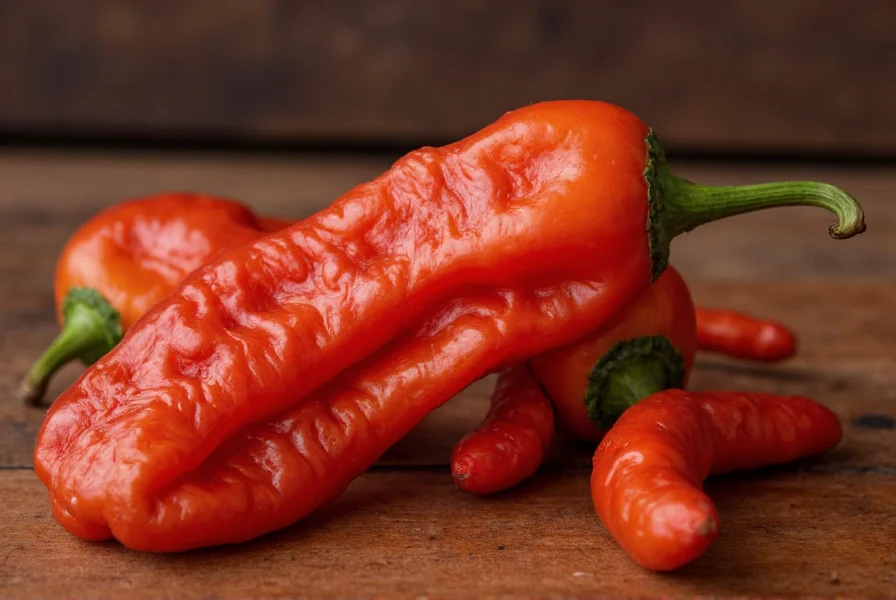The scorpion pepper, scientifically known as Capsicum chinense , delivers an intense heat experience that ranks among the most extreme on the Scoville scale. Understanding its precise heat measurement helps culinary enthusiasts and pepper growers make informed decisions about cultivation, handling, and consumption.
Understanding the Scoville Scale Measurement
Developed by pharmacist Wilbur Scoville in 1912, the Scoville Organoleptic Test originally measured capsaicin concentration through human taste panels. Modern laboratories now use High-Performance Liquid Chromatography (HPLC) to provide precise Scoville Heat Unit (SHU) measurements without human testers.
When evaluating scorpion pepper Scoville heat levels, researchers test multiple specimens because heat intensity varies based on growing conditions, soil composition, and climate. The official range of 1.2-2 million SHU represents the collective measurements from numerous verified samples.
Scorpion Pepper Varieties and Their Scoville Ratings
Several scorpion pepper varieties exist, each with slightly different heat profiles:
| Pepper Variety | Scoville Heat Units | Comparison to Jalapeño |
|---|---|---|
| Trinidad Moruga Scorpion | 1,200,000-2,000,000 SHU | 150-250x hotter |
| Trinidad Scorpion Butch T | 1,463,700 SHU (verified) | 180x hotter |
| Ghost Pepper (Bhut Jolokia) | 855,000-1,041,427 SHU | 100-130x hotter |
| Habanero | 100,000-350,000 SHU | 12-45x hotter |
| Jalapeño | 2,500-8,000 SHU | Baseline |
This scorpion pepper Scoville chart demonstrates why these peppers require careful handling. The Trinidad Moruga Scorpion briefly held the Guinness World Record for hottest chili pepper before being surpassed by the Carolina Reaper.

Physical Characteristics and Flavor Profile
Beyond the scorpion pepper heat level, these chilies feature unique characteristics:
- Appearance: Typically 2 inches long with a bulbous body and distinctive curved tail resembling a scorpion's stinger
- Color: Ripens from green to vibrant red, though yellow and chocolate varieties also exist
- Flavor: Initial fruity, floral notes followed by intense, lingering heat
- Plant characteristics: Grows on compact bushes reaching 3-4 feet tall, producing abundant fruit
The scorpion pepper Scoville measurement doesn't tell the complete story. Unlike some extremely hot peppers that deliver immediate searing pain, scorpion peppers often provide 30-45 seconds of fruity flavor before the intense heat builds gradually but persistently.
Safety Considerations for Handling Extreme Heat Peppers
Working with peppers at this scorpion pepper Scoville range requires proper precautions:
- Always wear nitrile gloves when handling fresh or dried peppers
- Avoid touching your face, especially eyes, during preparation
- Work in well-ventilated areas to prevent inhaling capsaicin particles
- Use separate cutting boards and utensils dedicated to hot peppers
- Have dairy products like milk or yogurt nearby to neutralize heat if needed
If you experience excessive burning, remove capsaicin with oil-based cleansers rather than water, which spreads the compound. For skin exposure, apply milk or specialized pepper wash. For eye exposure, flush with saline solution and seek medical attention if irritation persists.
Culinary Applications of Scorpion Peppers
Despite their extreme scorpion pepper Scoville rating, these chilies have legitimate culinary uses when handled properly:
- Hot sauces: A single pepper can flavor an entire batch of sauce
- Infused oils and vinegars: Provides heat without solid particles
- Caribbean cuisine: Traditional ingredient in Jamaican jerk seasoning
- Preserves: Small amounts enhance fruit jams and chutneys
- Craft beverages: Used in minute quantities for spicy cocktails
Chefs working with scorpion peppers typically use them in powdered form or as infused liquids to ensure even distribution and prevent someone from accidentally biting into a whole pepper. When substituting in recipes, use just 1/8 to 1/4 teaspoon of scorpion pepper powder in place of one habanero.

Growing Scorpion Peppers Successfully
Cultivating peppers at this scorpion pepper Scoville intensity requires specific conditions:
- Climate: Thrives in tropical environments with temperatures between 75-90°F (24-32°C)
- Soil: Well-draining, slightly acidic soil (pH 6.0-6.8) with organic matter
- Watering: Consistent moisture without waterlogging (drought stress increases heat)
- Harvesting: Pick when fully colored and slightly firm for optimal flavor development
Interestingly, environmental stressors like limited water or nutrient deficiency can push scorpion peppers toward the higher end of their Scoville range. Commercial growers seeking consistent heat levels carefully control these variables.
Common Questions About Scorpion Pepper Heat Levels
How does the scorpion pepper compare to the Carolina Reaper on the Scoville scale?
The Carolina Reaper generally exceeds the scorpion pepper's heat, measuring 1,400,000-2,200,000 SHU compared to the scorpion's 1,200,000-2,000,000 SHU. While some scorpion varieties approach Reaper heat levels, the Reaper holds the official record as the world's hottest pepper.
Can you eat a raw scorpion pepper safely?
Consuming a whole raw scorpion pepper is not recommended due to its extreme heat level. Even experienced chili eaters typically use these peppers in minute quantities. If attempting to eat one, start with a tiny piece (1/8 inch) and have dairy products available to counteract the heat. Never eat these peppers on a dare or without proper preparation.
Why do scorpion peppers have such a high Scoville rating?
Scorpion peppers evolved high capsaicin concentrations as a defense mechanism against mammals. The specific genetic makeup of Capsicum chinense varieties allows them to produce exceptionally high levels of capsaicinoids, particularly dihydrocapsaicin, which contributes significantly to their intense, lingering heat sensation.
How long does the burning sensation from a scorpion pepper last?
The intense burning sensation typically peaks within 5-10 minutes and may last 30-45 minutes in the mouth. Complete recovery usually occurs within 1-2 hours, though some people report lingering sensitivity for up to 24 hours. Consuming dairy products like milk or yogurt can significantly reduce the duration and intensity of the burning sensation.
What's the difference between Trinidad Moruga Scorpion and Trinidad Scorpion Butch T?
Both are extremely hot scorpion pepper varieties, but the Trinidad Moruga Scorpion generally produces higher yields with slightly more variable heat (1.2-2 million SHU), while the Trinidad Scorpion Butch T is more consistent but slightly less hot (peaking around 1.46 million SHU). The Moruga variety has a more rounded shape with a distinctive stinger tail, while the Butch T tends to be more elongated.











 浙公网安备
33010002000092号
浙公网安备
33010002000092号 浙B2-20120091-4
浙B2-20120091-4